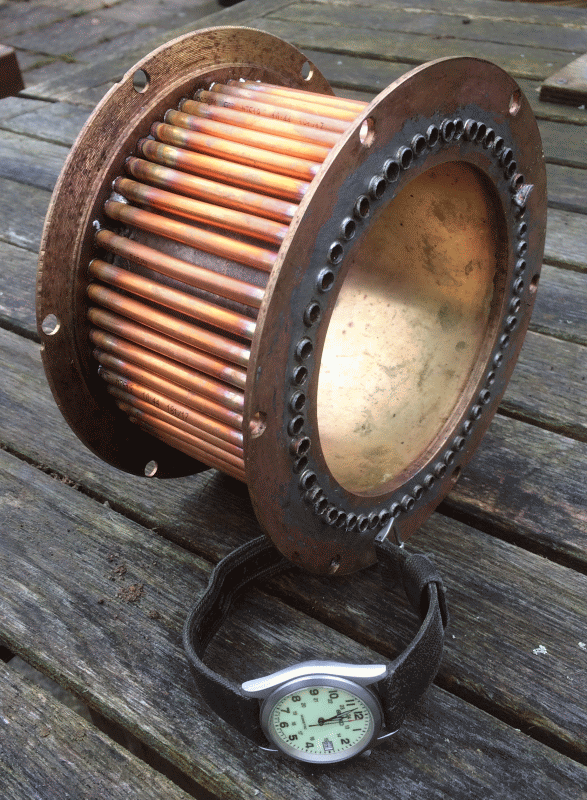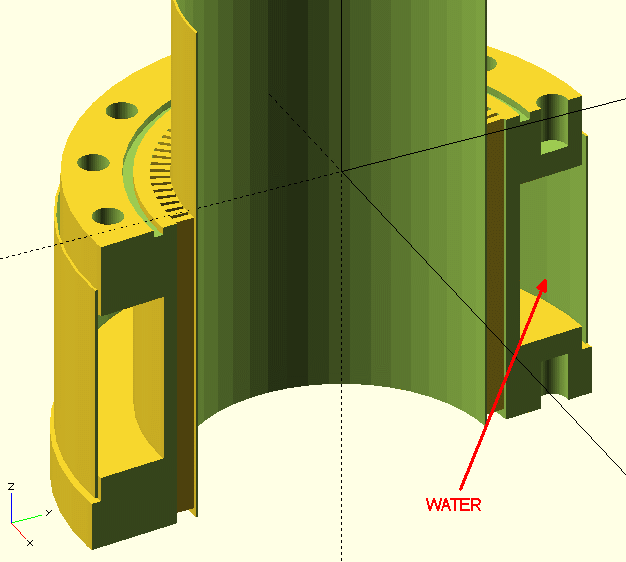Page 16 – The Cooler
Let’s say that a
particular engine will run with 100oC
temperature difference between
the hot cap and the cold
end.
So, when the hot cap reaches 120oC
and the air temperature is 20oC,
the shaft will turn.
As the heat rises, say to 220C, a
200oC
differential makes the engine run more vigorously.
Likewise,
a 300oC,
or 400oC
differential just keeps raising the engine power.
But,
heat flows in all directions - and the bigger the differential,
the faster it flows.
One
comment is:- “Other than the
burner, everything else in the engine is a cooler.”
When
the differential is say 500oC,
then the reality is that the so called cold end is actually
getting quite hot.
The engine will still run with
a hot end at 500oC
and the cold end at 400oC.
With
the natural heat loss from the metal of the engine, a 500oC
top could reach
thermal equilibrium with the bottom at say
250oC.
But
if we were to cool the bottom end down to say 150oC,
that would widen the differential
and improve the
engine.
Thus the water cooler.
Alternatively,
let’s pass the gas through slits on one side of an aluminium
wall.
But how to make the
cooler?
One method is to route the gas
through a large quantity of small pipesin a water chamber.
100 pipes need 200 gas tight
welds. A lot of work.

The other side of the wall has the cooling water
circulation.
No need for gas tight welds.